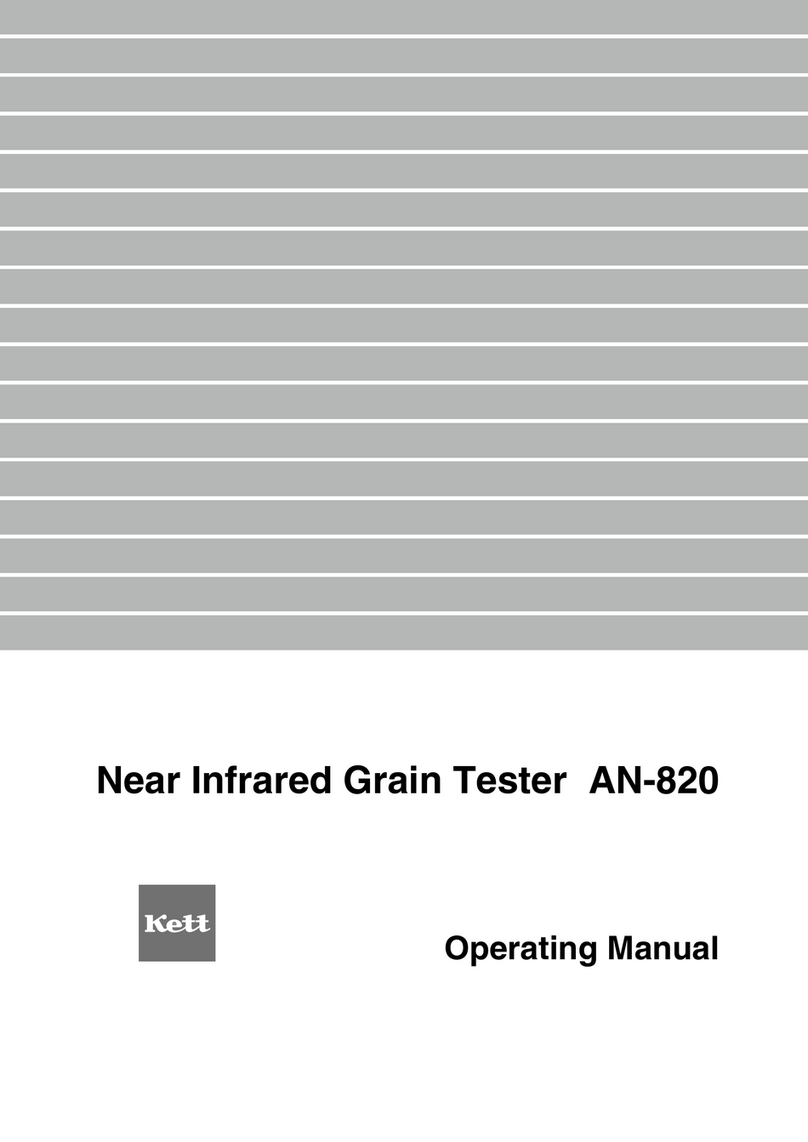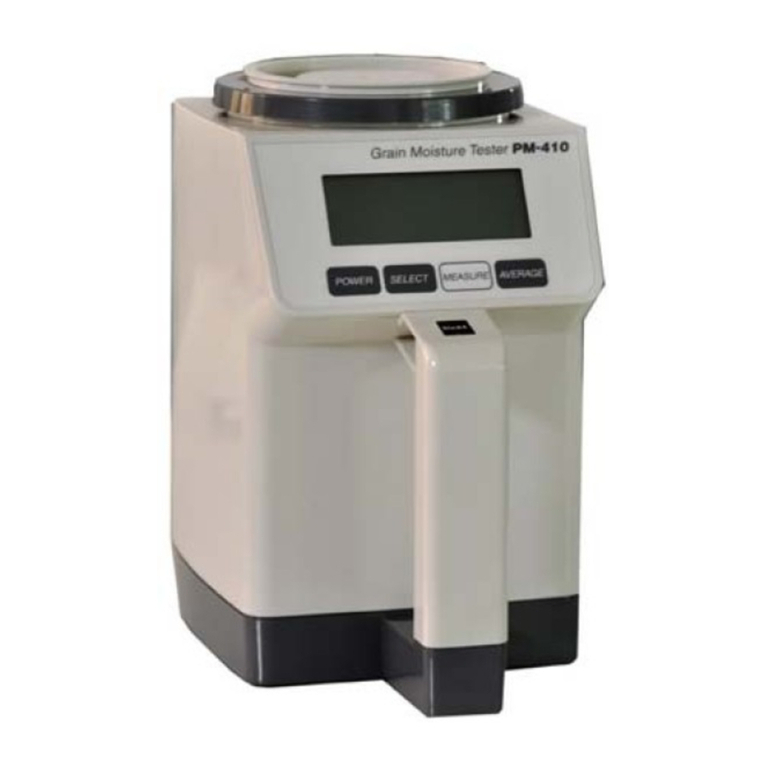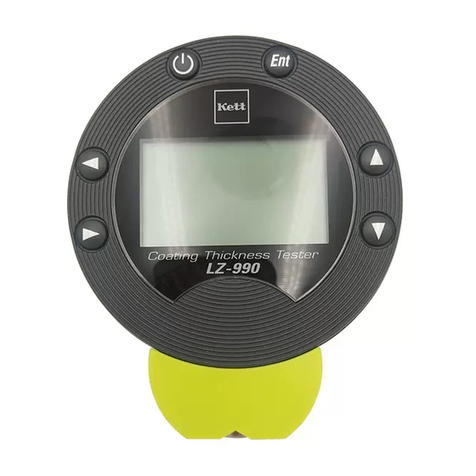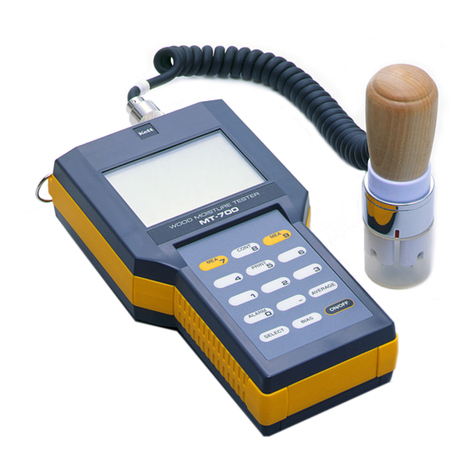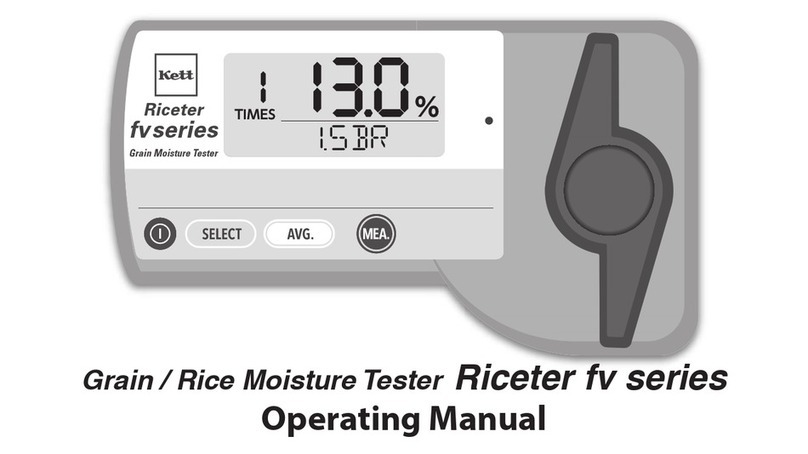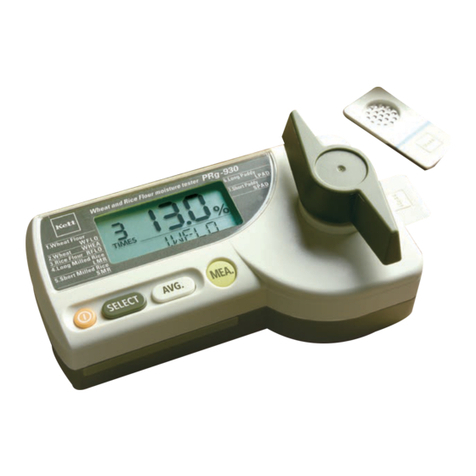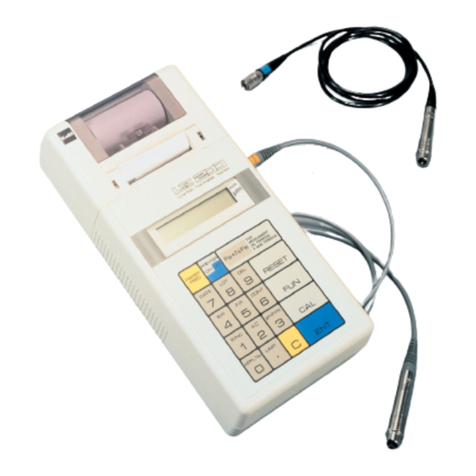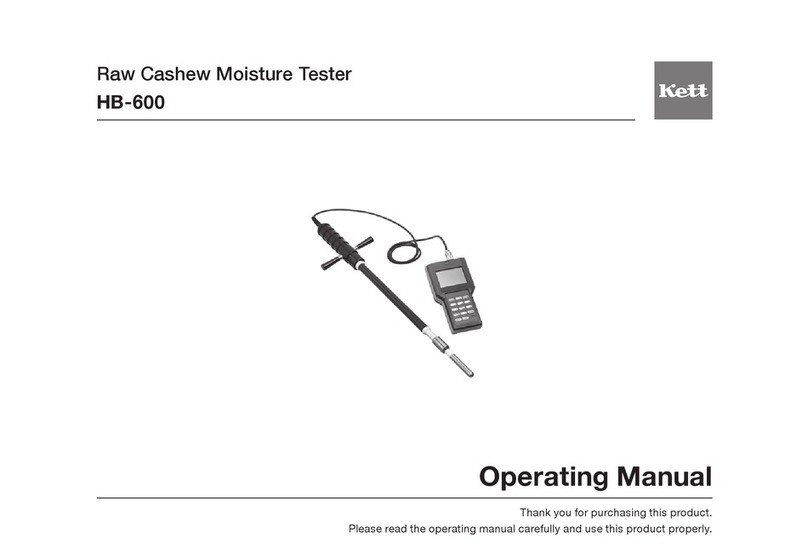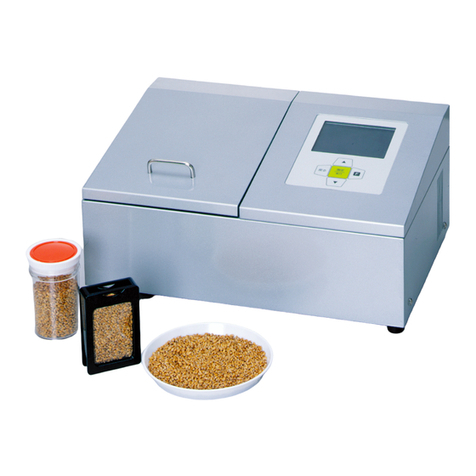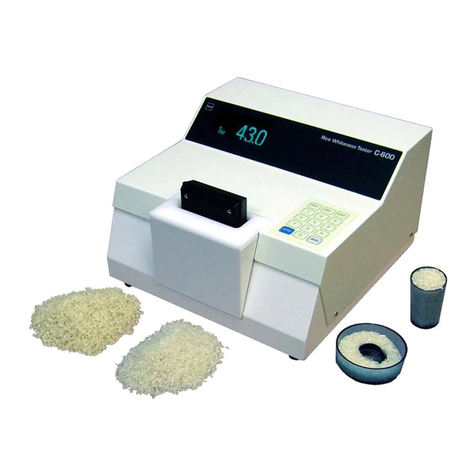
8
5-1.Connecting the power cord
[Caution] Power supply voltage may be different when using
this product in other countries. Please only use a
power cord designed for your country.
(1) Insert the power cord into the power supply connector on
the rear of the main unit.
(2) If the power supply is a three-prong plug 100V-120V outlet,
insert the power cord into VAC outlet. (See the right gure and in
case of 100V-120V use with the blade plug connector). Connect
the included power plug conversion adapter into the power cord
first, then plug the cord into a 100V-120V power outlet. Next,
connect the ground wire on the power cord to the ground.
[Caution]
If 200V-240V outlet is used, power cord B should be used.
[Caution]
Ifthepowersupplyis200V-240Vwithaatbladeplug,
the conversion adapter should be prepared by yourself.
[Caution]
If the power supply is 100V-120V with a round pin plug,
the conversion adapter should be prepared by yourself.
5-2. Whiteness standard plate set
As shown in the diagram, insert the whiteness standard
plate into the drawer of the main unit and close the drawer.
[Note] To ensure proper placement of the whiteness standard
plate, there is a pin that protrudes from the bottom.
Make sure the pin goes into the hole in the drawer.
[Note]
Be sure not to touch or scratch the hole on whiteness
standard plate. If it gets dirty, clean it with the glass cleaner.
[Note] Keep the whiteness standard plate in the case when
not in use. Use the magnetic bottom of the case to
hang it in a convenient place (or on the instrument).
5-3. Starting up the main unit
(1) Turn the power switch located on the back of the main unit
to ON..
(2) [WARMING-UP] is displayed. Dots will flash for about 20
seconds.
[Note] If the whiteness standard plate is incorrectly
placed, when you turn on the power switch, [Insert
STD] or [Error 01 Leak] will display. If this occurs,
correctly insert the whiteness standard plate into
the drawer (see 5-2).
(3) When powering up, if the machine is set to standard plate
check mode, the whiteness standard plate value will display.
(4) If you press the key, it will change to measurement
mode and ‘CHECK STD’ will disappear.
(5) Remove the whiteness standard plate.
5. Preparing for Measurement
Whiteness Standard Plate
Whiteness Standard Plate Case
[Example]
When a whiteness standard plate
value of 86.5 is selected.













